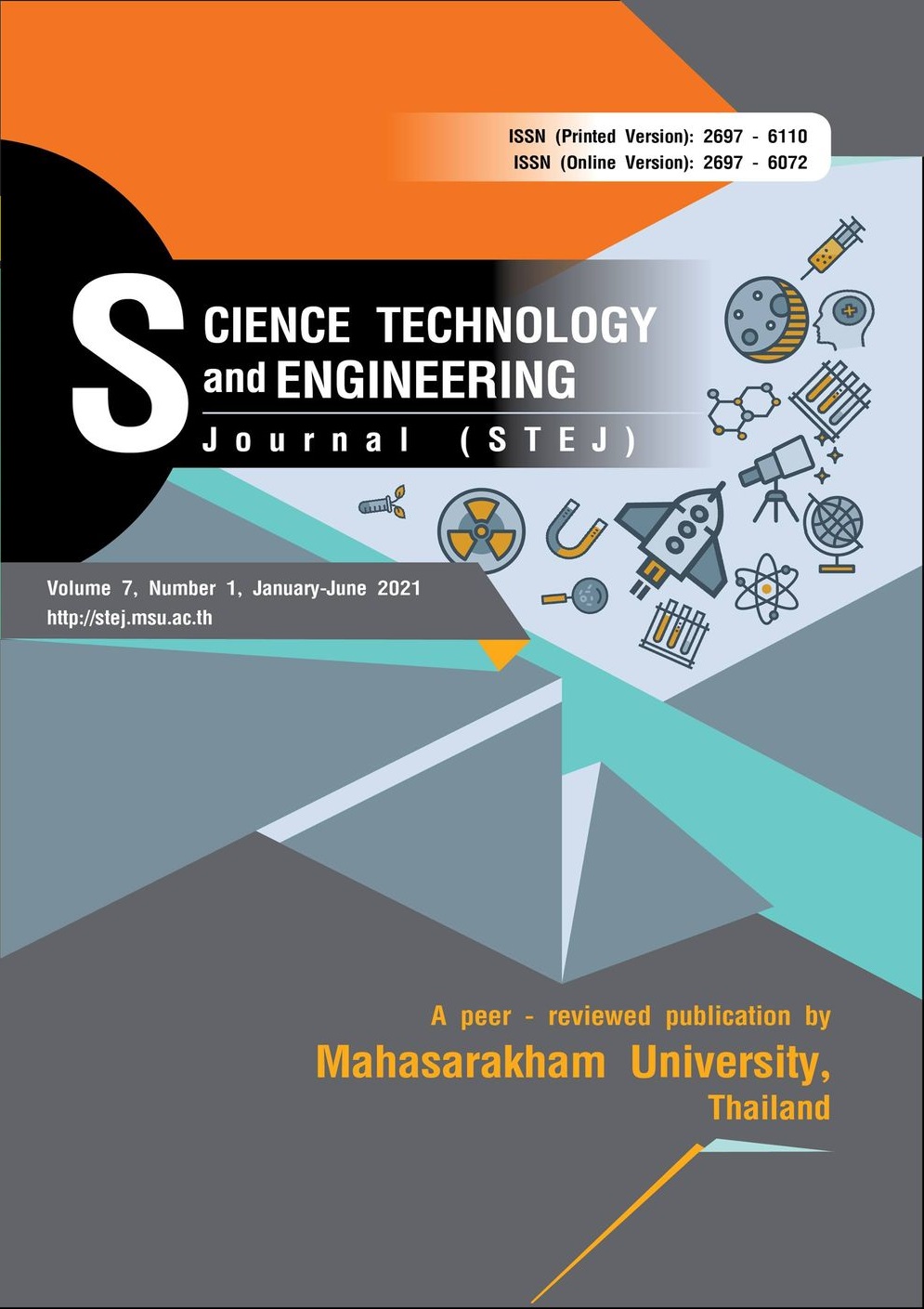Enhancement of the Heat Transfer Efficiency of Closed Wet Cooling Tower by a Water Spray Method
Keywords:
Water cooling, water spray method, cooling towerAbstract
This research aimed to enhance the heat transfer efficiency of 200 TR (Ton of Refrigeration) closed wet cooling tower. According to the study, it was found that one factor that had effects on heat transfer was atmosphere temperature during 01:00-04:00 p.m. Summer temperature in Thailand which is higher than 36 ºC reduces the efficiency of heat transfer. To solve this problem, the researcher enhanced the efficiency by reducing the temperature around thermoelectric coolers by spraying water particles between 20–70 micron with a water flow rate of 20 liters per minute and spray distance of 20, 30, 40, 50, and 60 centimeters. The results showed that at the spray distance of 30 centimeters, the temperature could be reduced to a maximum of about 2.74 ºC. Secondly, a spray distance of 40 centimeters could reduce the temperature by approximately 2.23 ºC. Lastly, at the distance of 20 and 50 centimeters, the temperature was approximately reduced 2 .06 ºC and 1.68 ºC, subsequently. However, a spray distance of 60 centimeters could not reduce the temperature of heat exchange. When analyzing a break-even point, it was found that a payback period was about seven months. These results could be applied as guidelines to enhance the efficiency of heat transfer in factories, but the water flow rate used for spraying should be additionally studied.
References
Chutrakul, D., Asadamongkok, P. & Suksangpanomrung, A. (2010). The study and design of heat transfer enhancement of closed wet crossflow cooling tower. Srinakharinwirot University (Journal of Science and Technology), 2 (1), 47-58.
Daongrudee, C., Asadmongkon, P. & Suksangpanomrung, A. (2010). The study and design of heat transfer enhancement of closed wet crossflow cooling tower. Srinakharinwirot University Journal of Science and Technology, 2, 47-58.
Deecha, C. & Jaojaruek, K. (2014). Efficiency enhancement of air cooling tower by spraying water at the condenser unit. The 28th conference of Mechanical Engineering Network of Thailand.
Facão, J. & Oliveira, A. (2004). Heat and mass transfer correlations for the design of small indirect contract cooling towers. Applied Thermal Engineering, 24, 1969-1978.
Facão, J. & Oliverira, A. (2000). Thermal behavior of closed wet cooling towers for use with chilled ceilings. Applied Thermal Engineering, 20 (13), 1225-1236.
Mahdi, Q.S. & Jaffal, H.M. (2016). Thermal Characteristics of Closed Wet Cooling Tower Using Different Heat Exchanger Tubes Arrangement. Journal of Engineering, 22 (1), 140-158.
Meteorological Department, (2021). Weather forest. https://www.tmd. go.th/services /weekly_report.php
Mizushina, R. & Miyashita, H. (1968). Characteristics and methods of thermal design of evaporative coolers. Chemical engineering, 8 (3), 532-538.
Pachanapan, P. (2016). Minimizing electricity cost in chiller air-conditioner: a case study of temperature reduction of condenser. Kasetsart Engineering Journal, 152-154.
Parker, R. & Treybal, R. (1961). The heat and mass transfer characteristics of evaporative coolers. Chemical Engineering Progress Symposium, 57 (32), 138-149.
Downloads
Published
How to Cite
Issue
Section
License
Copyright (c) 2021 Science Technology and Engineering Journal (STEJ)

This work is licensed under a Creative Commons Attribution-NoDerivatives 4.0 International License.








